Explore Dhidhdhoo - Maldives Travel, Asia
Nestled in the northernmost region of the Maldives, Dhidhdhoo is a serene island paradise that offers a blend of natural beauty and rich cultural heritage. As one of the less-traveled islands, Dhidhdhoo presents an opportunity for travelers seeking an authentic Maldivian experience away from the bustling tourist hotspots. Whether you're drawn by its stunning beaches, vibrant local culture, or tranquil ambiance, Dhidhdhoo promises a memorable getaway. Let's go on an adventure to explore what makes Dhidhdhoo a must-visit destination, from its historical background to top attractions and local culinary delights.
Population: Approximately 3,400 in 2022.
Economy: Dhidhdhoo's economy revolves around fishing, tourism, and local trade. Its vibrant community thrives on traditional industries while catering to visitors with local guesthouses and cultural experiences.
Landmarks: Famous for the Niyama Beach, Maziya Mosque, and Hinnavaru Island.
Maldives
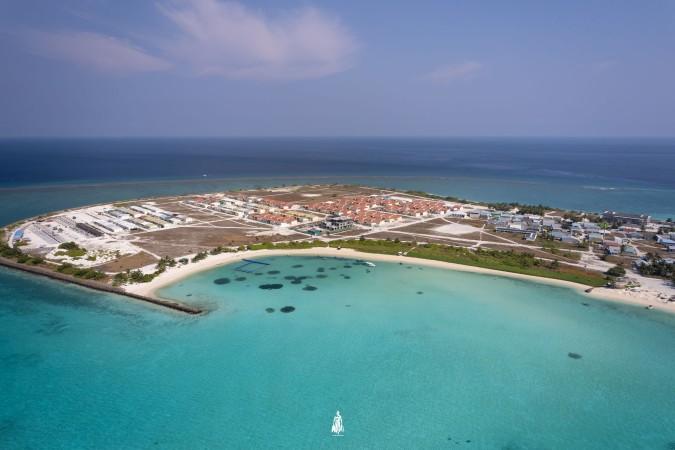
Overview of Dhidhdhoo
History & Cultural Influence
Dhidhdhoo's history is deeply intertwined with the broader narrative of the Maldives. As part of the Haa Alif Atoll, Dhidhdhoo has been a vital part of the Maldivian archipelago for centuries. The island's strategic location made it a crucial hub for maritime trade, influencing its culture and development over time. The culture of Dhidhdhoo is a vibrant tapestry woven from traditional Maldivian practices and external influences. Historical sites scattered across the island, including ancient mosques and remnants of old trading posts, provide a window into its past. Local festivals, traditional music, and intricate crafts reflect the island's unique cultural identity, shaped by both historical events and natural surroundings.
Interaction with The Locals
Dhidhdhoo is home to a close-knit community of approximately 3,400 residents. The island’s population is known for its friendly and welcoming nature, reflecting the warmth and hospitality characteristic of Maldivian culture. The citizens of Dhidhdhoo primarily engage in traditional activities such as fishing and farming, alongside a growing interest in tourism-related occupations. The community values its cultural heritage and is keen to share its unique traditions with visitors.
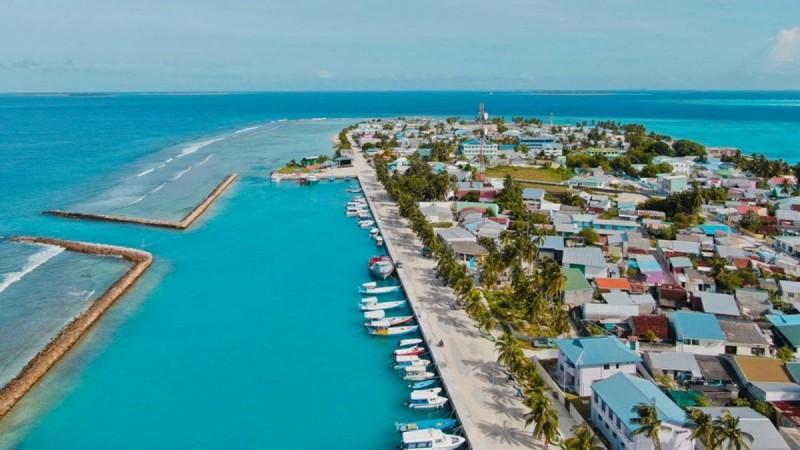
Dhidhdhoo's coast - © Raajje
Top Attractions in Dhidhdhoo
Dhidhdhoo is brimming with attractions that highlight its natural beauty and cultural heritage. These must-see attractions showcase the diverse experiences Dhidhdhoo has to offer, from stunning natural landscapes to rich cultural sites.
- Niyama Beach: Known for its serene white sands and crystal-clear waters, Niyama Beach is the perfect place to unwind and soak in the Maldivian sun. Its calm waters are ideal for snorkeling, offering a chance to discover vibrant coral reefs and marine life.
- Maziya Mosque: A historical gem, Maziya Mosque is one of the island’s oldest mosques. Its traditional Maldivian architecture and intricate woodwork make it a fascinating site for those interested in the island's Islamic heritage.
- Dhidhdhoo Local Market: Dive into local life at the Dhidhdhoo Local Market. Here, you can find an array of traditional crafts, souvenirs, and fresh produce. It’s a vibrant hub where you can experience the island’s everyday activities and purchase unique items.
- Kondhu Wadi: This scenic nature trail winds through lush vegetation and along the coastline, offering breathtaking views and opportunities for birdwatching. It’s a great way to immerse yourself in the island’s natural environment.
- Hinnavaru Island: Just a short trip away from Dhidhdhoo, Hinnavaru Island is known for its charming local village and beautiful coastal scenery. It’s an excellent destination for a day trip to experience more of the Maldivian way of life.
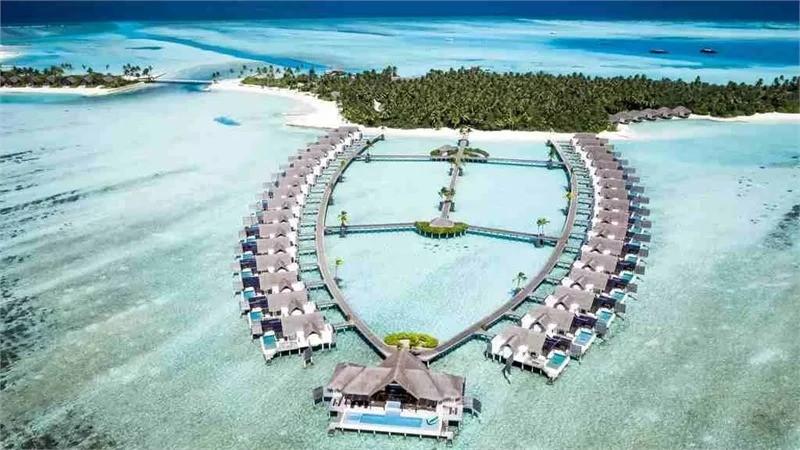
Niyama Beach - © Maldives Tourism
Must-Try Dishes in Dhidhdhoo
Exploring Dhidhdhoo’s culinary tradition offers a delightful experience for food lovers. The island’s cuisine features an array of flavors, from traditional Maldivian dishes to local specialties. Each of these dishes provides a unique taste of Dhidhdhoo’s culinary heritage, ensuring that your visit is both flavorful and memorable.
- Mas Huni: A traditional Maldivian breakfast staple made from tuna, coconut, onions, and chili, served with roshi (flatbread). It's a tasty and exciting way to begin the day.
- Garudhiya: A savory fish soup made with tuna, onions, and spices. It’s typically enjoyed with rice, lime, chili, and onions, offering a comforting and hearty meal.
- Fihunumas: Grilled fish marinated in local spices. It’s a delectable way to enjoy the island’s fresh seafood with a burst of flavor.
- Hedhikaa: Traditional Maldivian snacks that include an assortment of savory treats such as fish cakes and coconut pastries. These are perfect for sampling different flavors and enjoying local tea time.
- Saagu Bondibai: A sweet dessert made from sago pearls, coconut milk, and sugar. It's a creamy, soothing dessert popular among locals.
- Boshi Mashuni: A refreshing salad made from bananas, coconut, and spices. This unique dish combines sweetness with a hint of spiciness, making it a flavorful addition to any meal.
- Dhon Riha: A rich, coconut-based curry made with a variety of meats or seafood. It’s known for its deep, aromatic flavors and is typically served with rice.
- Bajje: Maldivian fritters made from lentils and spices. They are crispy on the outside and tender inside, often enjoyed as a snack or appetizer.
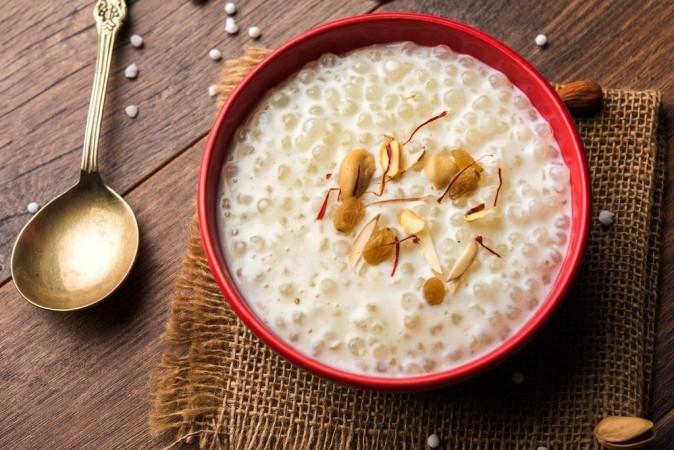
Saagu Bondibai - © Freepik
Festivals & Local Celebrations
Dhidhdhoo’s calendar is rich with festivals and local celebrations that reflect the island’s vibrant culture and traditions. These festivals and celebrations provide a wonderful opportunity to experience Dhidhdhoo’s cultural richness and engage with the local community in meaningful ways.
Eid Celebrations
These significant Islamic festivals mark the end of Ramadan, the holy month of fasting. Eid al-Fitr and Eid al-Adha in Dhidhdhoo is celebrated with communal prayers at the mosque, followed by festive feasts featuring an array of traditional dishes. The community comes together to exchange gifts, visit family and friends, and enjoy cultural performances and activities. It's a happy occasion full of coziness and camaraderie.It's a happy occasion full of coziness and camaraderie.
Local Fishermen’s Festival
This unique festival celebrates Dhidhdhoo’s deep connection to fishing, a cornerstone of island life. During the Local Fishermen’s Festival, visitors can witness traditional fishing techniques and enjoy freshly caught seafood. The event includes demonstrations, cooking classes, and seafood tastings, providing insight into the island’s fishing heritage. Cultural performances and traditional music add to the festive ambiance.
Maldivian Cultural Day
Held annually, Maldivian Cultural Day is a celebration of the nation’s rich cultural heritage. In Dhidhdhoo, this day features a vibrant display of traditional Maldivian music, dance, and art. Local artisans showcase their crafts, including woven mats, intricate carvings, and colorful textiles. The festival also includes interactive workshops and performances, offering visitors a hands-on experience of Maldivian culture.
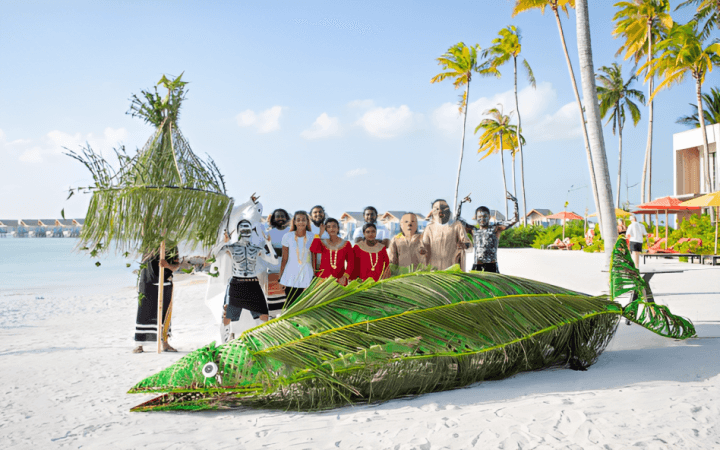
Eid Celebrations - © Splendid Asia
What to Do in Dhidhdhoo
Dhidhdhoo offers a variety of activities that cater to different interests, ensuring a fulfilling visit for every traveler. These activities provide a well-rounded experience of Dhidhdhoo, from its natural wonders to its cultural richness.
- Snorkeling in Dhidhdhoo: Explore the vibrant coral reefs and diverse marine life that surround Dhidhdhoo. The clear waters provide excellent visibility for underwater adventures.
- Fishing Tours in Dhidhdhoo: Take part in a traditional fishing experience with the local fisherman. It’s a hands-on way to learn about the island’s fishing practices and enjoy the fruits of your labor.
- Dhidhdhoo Cultural Tours: Discover Dhidhdhoo’s cultural heritage through guided tours that include visits to historic sites, local markets, and traditional crafts.
- Dhidhdhoo Beach Relaxation: Spend a day lounging on the picturesque beaches of Niyama Beach, where you can unwind, swim, or enjoy a seaside picnic.
- Nature Walks in Dhidhdhoo: Take a stroll along the nature trails of Kondhu Wadi to experience the island’s natural beauty and spot local wildlife.
Shopping in Dhidhdhoo
Shopping in Dhidhdhoo offers a chance to take home a piece of Maldivian culture. Here are some highlights. Shopping in Dhidhdhoo is not only about finding great items but also about connecting with the island’s culture and supporting its local economy.
- Local Markets: The Dhidhdhoo Local Market is the place to find traditional crafts, including hand-woven mats, local jewelry, and intricate wood carvings. It’s a great spot to pick up souvenirs and experience local commerce.
- Crafts and Souvenirs: Look for unique items like coconut shell art, traditional Maldivian clothing, and local spices as these handcrafted goods would make some great memorable keepsakes.
- Seafood and Spices: The island’s markets also offer fresh seafood and a variety of local spices. Bringing home these flavors is a great way to extend your Maldivian experience.
- Artisan Goods: Visit local artisans to see their work and purchase handmade items. Supporting local craftspeople provides a more meaningful shopping experience.
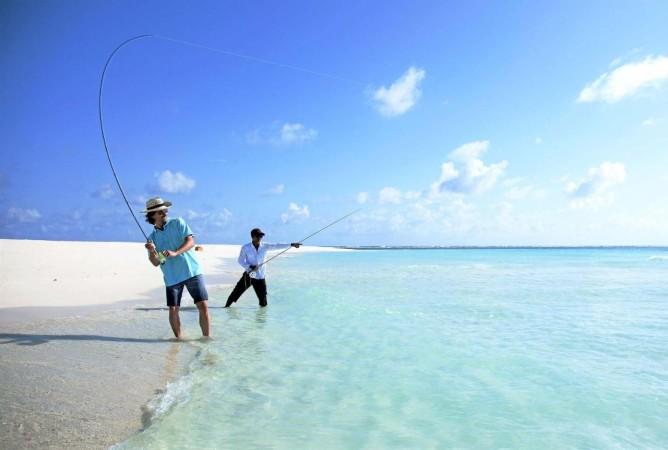
Fishing Tours in Dhidhdhoo - © Maldives Tourism
Weather in Dhidhdhoo: Best Time to Visit
Dhidhdhoo enjoys a tropical climate with year-round warmth and high humidity. Understanding the seasonal weather trends can help you plan your visit to make the most of your experience.
Dry Season in Dhidhdhoo
This period is considered the peak tourist season in Dhidhdhoo. With lower humidity and less rainfall, the weather is ideal for beach activities, snorkeling, and exploring the island’s natural beauty. Clear sky and tranquil waters provide ideal weather for outdoor activities and tourism. Expect higher accommodation rates and more tourists during this season, but also the best weather for enjoying the island’s attractions.
Wet Season in Dhidhdhoo
During the southwest monsoon, Dhidhdhoo experiences increased rainfall and higher humidity. While this season brings occasional heavy showers, it’s also a time when the island’s landscape is lush and vibrant. This time is less busy, creating a more peaceful and relaxing atmosphere. Travelers during this season can enjoy lower accommodation prices and a quieter experience, although some outdoor activities may be limited due to the weather.
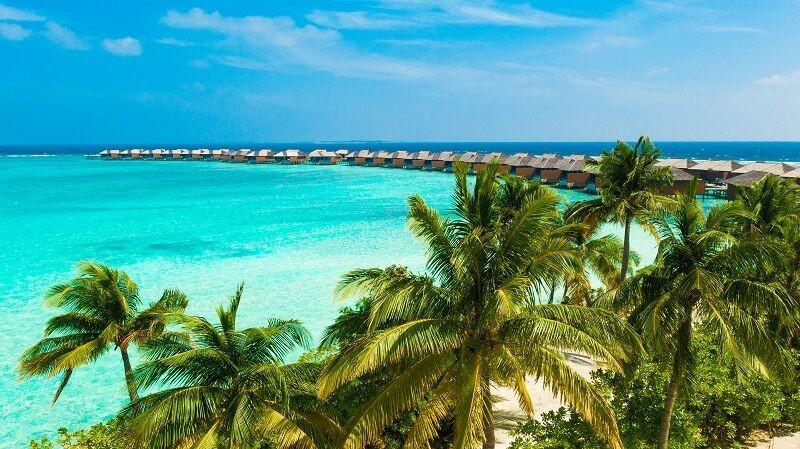
Dry Season in Dhidhdhoo is the ideal time for your Maldives great escape - © Maldives Tourism
Culture Etiquette in Dhidhdhoo
When visiting Dhidhdhoo, it’s important to respect local customs and cultural practices. Following these cultural guidelines will help you interact respectfully with the locals and enhance your overall experience in Dhidhdhoo.
- Dress Modestly: The Maldivian culture values modesty, especially in local villages. It’s advisable to wear clothing that covers the shoulders and knees when exploring the island or visiting religious sites.
- Respect Religious Practices: Dhidhdhoo is predominantly Muslim, so be mindful of prayer times and religious customs. During prayer times, avoid walking through prayer areas and be respectful of local traditions.
- Photography: Prior to taking pictures of someone, you should always get their consent, especially in rural locations. Respect people's right to privacy and refrain from taking unauthorized photos of places of worship.
- Dining Etiquette: It's customary to eat with your right hand when dining with natives as the left hand is dirty. Additionally, pay attention to regional dining traditions.
Essential Travel Information
Getting Around Dhidhdhoo
Dhidhdhoo offers several transportation options to help you navigate the island and explore its surroundings.
- Bicycles and Motorbikes: Renting bicycles or motorbikes is a popular and eco-friendly way to explore Dhidhdhoo. Many visitors opt for bikes to leisurely tour the island and reach remote spots.
- Boats: Given Dhidhdhoo’s island location, boats are essential for traveling to and from neighboring islands or resorts. Local dhonis (traditional boats) are commonly used for these purposes.
- Walking: For those who enjoy a more leisurely pace, walking is a great way to explore Dhidhdhoo. The island is relatively small, and walking allows you to fully appreciate its scenic beauty.
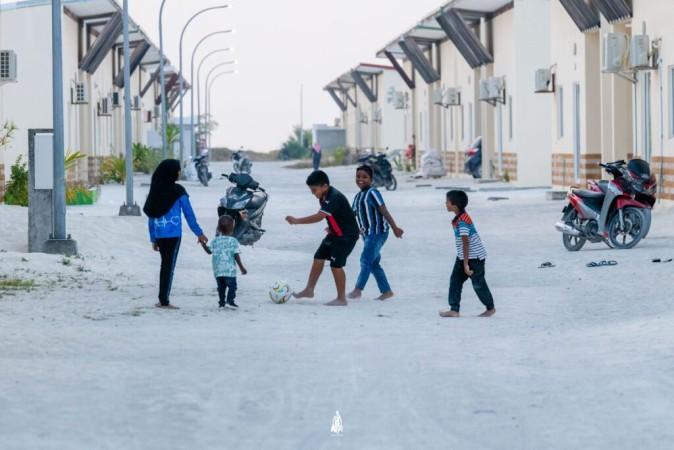
Walking along Dhidhdhoo's streets to explore the local life - © Zuvaan Masveriya
ATM & Banking Services
During your stay in Dhidhdhoo, managing your finances is straightforward with several available options. The island features a few ATMs conveniently located in commercial areas, providing easy access to cash withdrawals. Local banking facilities are available for a range of transactions, including currency exchange and account services. Many businesses accept major credit cards, but carrying some cash is advisable for smaller vendors or remote areas. Currency exchange can also be conducted at local banks and some hotels, ensuring you have enough cash for smaller transactions or times when banking services might be limited.
Where to Stay in Dhidhdhoo
Each accommodation type offers different benefits, so you can choose based on your preferences for comfort, cultural immersion, and budget.
- Guesthouses: If you want to have a more genuine experience, think about booking a room in a guesthouse in the area. You may experience customized hospitality and become fully immersed in the local way of life by staying at these lodgings.
- Hotels: There are several small to mid-range hotels on the island that offer comfortable rooms and basic amenities. These hotels cater to travelers looking for convenience and value.
- Resorts: While Dhidhdhoo is less commercialized compared to other Maldivian destinations, there are a few resorts and boutique hotels that offer upscale amenities and exclusive experiences.
- Homestays: A very authentic experience may be had by staying with Maldivian families through homestays. This option can be a fulfilling way to establish a connection with the community and provides insight into daily life on the island.
Des articles pour vous

Voyage à Kampong Cham - Cambodge, Asie
Kampong Cham est une charmante ville riveraine située le long du fleuve Mékong. Connue pour son importance historique et ses attractions culturelles, Kampong Cham offre un mélange d'architecture coloniale, de temples anciens et de paysages pittoresques. Kampong Cham est reliée au district voisin de Tbong Khmum par le pont Kizuna, le premier pont au Cambodge à traverser le fleuve Mékong, en faisant un carrefour de transport crucial pour la région.
Population : Estimation de 80 000 habitants (en 2024)
Économie : Bien que n'étant pas encore une destination touristique majeure, Kampong Cham propose des sites culturels et historiques, tels que le temple Wat Nokor et le pont en bambou de Koh Pen, ainsi que des attractions naturelles comme des forêts et des chutes d'eau. Le gouvernement se concentre sur le développement du tourisme pour améliorer l'économie locale.
Points d'intérêt : Wat Nokor Bachey, Phnom Han Chey, Phnom Pros et Phnom Srey, pont en bambou de Koh Pen, Wat Joy T'maw, Preah Theat Teuk Chha, piste d'atterrissage abandonnée de l'US.

Explorez Nha Trang - Voyage au centre du Vietnam, Asie
Nichée le long de la magnifique côte du Vietnam, Nha Trang se distingue comme une destination de premier choix pour les voyageurs. Cette ville côtière, réputée pour ses superbes plages et sa vie marine foisonnante, s'adresse à tous. Nha Trang vous accueille à bras ouverts, que vous recherchiez des aventures, de la culture ou de la détente au bord de la mer. Ce guide vous fera découvrir les points forts de cet endroit magnifique, facilitant ainsi la planification de votre voyage de manière fluide et excitante.
Population : Environ 423 000 habitants en 2019.
Économie : L'un des principaux centres touristiques du Vietnam et la plus grande économie de la province de Khanh Hoa.
Sites emblématiques : Célèbre pour les tours Cham de Po Nagar, la cathédrale de Nha Trang et l'île Hon Mun.

Voyage à Sihanoukville - Cambodge, Asie
Sihanoukville, une ville côtière du sud-ouest du Cambodge, est la capitale de la province de Preah Sihanouk. Située sur une péninsule le long du golfe de Thaïlande, la ville est bien reliée à Phnom Penh par des autoroutes principales et dispose d'un aéroport international.
La ville abrite le seul port en eau profonde du Cambodge, jouant un rôle crucial dans la logistique et le commerce du pays. Les plages magnifiques de Sihanoukville, telles qu'Ochheuteal et Serendipity, attirent aussi bien les touristes nationaux qu'internationaux. Le développement économique a prospéré ces dernières années, en particulier grâce à la création de la Zone économique spéciale de Sihanoukville (SSEZ) et aux investissements chinois dans les casinos, l'immobilier et les stations balnéaires. La ville offre également des attractions naturelles telles que le parc national de Ream et plusieurs îles voisines, en faisant une destination variée pour les voyageurs d'affaires et de loisirs.
Population : La population de Sihanoukville était d'environ 160 000 habitants en 2024.
Économie : Sihanoukville, une ville côtière en pleine croissance au Cambodge, se distingue par son mélange dynamique de développement économique et de tourisme. La Zone économique spéciale de Sihanoukville (SSEZ) est devenue un pôle industriel majeur, abritant plus de 180 entreprises et créant des milliers d'emplois. Avec le seul port en eau profonde du Cambodge, la ville joue un rôle clé dans le commerce et la logistique du pays. Bien qu'elle se soit transformée d'une petite ville balnéaire tranquille en un centre urbain animé, Sihanoukville reste célèbre pour ses plages immaculées, attirant des touristes tout au long de l'année. Les investissements chinois importants ont alimenté la croissance des hôtels, des casinos et de l'immobilier, faisant de la ville un centre d'opportunités économiques et d'hospitalité.
Monuments : Plage d'Otres, Plage d'Ochheuteal, Plage de l'Indépendance, Parc national de Ream, Chute d'eau de Kbal Chhay, Monument des Lions d'Or, Wat Leu.

Explorez Kharkhorin - Voyage en Mongolie, Asie
Bienvenue à Kharkhorin, un trésor historique niché au cœur de la Mongolie. Ancienne capitale vibrante de l'Empire Mongol sous le légendaire Gengis Khan, Kharkhorin se dresse comme un témoignage de la riche culture et de l'histoire de la Mongolie. Cette ville antique possède une combinaison unique d'importance historique et de paysages époustouflants, en faisant une destination incontournable pour un voyage de rêve en Mongolie. En mettant le pied à Kharkhorin, vous ferez un saut dans le temps, à une époque de grands palais, de routes commerciales prospères et d'échanges culturels sans pareils. Que vous soyez intrigué par les ruines anciennes, désireux d'explorer les traditions locales ou simplement en quête d'une immersion dans la beauté naturelle de la Mongolie, Kharkhorin a quelque chose à offrir à chacun.
Population : Environ 1 000 habitants en 2020.
Économie : L'une des attractions touristiques les plus importantes de la Mongolie et l'ancienne capitale de l'Empire Mongol.
Monuments : Célèbre pour les Ruines de Kharkhorin, le Monastère d'Erdene Zuu, et la Vallée d'Orkhon, un site du patrimoine mondial de l'UNESCO.

Explore Luang Prabang - Laos Travel, Asia
Luang Prabang, nestled in northern Laos at the meeting point of the Mekong river and Nam Khan river, is a city celebrated for its rich cultural heritage and stunning natural beauty. Recognized as a UNESCO World Heritage Site in 1995, it boasts a unique blend of traditional Lao and French architecture that has been carefully preserved. Whether you're wandering through its ancient temples, admiring the local architecture, or soaking in the natural beauty of waterfalls and rivers, Luang Prabang offers something for everyone.
Population: Approximately 470,000 in 2020.
Economy: Luang Prabang's economy thrives on tourism, with its UNESCO status drawing visitors to its temples, natural wonders, and cultural experiences. Local crafts, hospitality, and small businesses also play vital roles, supporting the town's sustainable growth. Local crafts, hospitality, and small businesses also play vital roles, supporting the town's sustainable growth.
Landmarks: Famous for the Wat Xieng Thong, Royal Palace Museum (also known as Haw Kham), and Mount Phousi (Phou Si Hill).Luang Prabang, nestled in northern Laos at the meeting point of the Mekong river and Nam Khan river, is a city celebrated for its rich cultural heritage and stunning natural beauty. Recognized as a UNESCO World Heritage Site in 1995, it boasts a unique blend of traditional Lao and French architecture that has been carefully preserved. Whether you're wandering through its ancient temples, admiring the local architecture, or soaking in the natural beauty of waterfalls and rivers, Luang Prabang offers something for everyone.
Population: Approximately 470,000 in 2020.
Economy: Luang Prabang's economy thrives on tourism, with its UNESCO status drawing visitors to its temples, natural wonders, and cultural experiences. Local crafts, hospitality, and small businesses also play vital roles, supporting the town's sustainable growth. Local crafts, hospitality, and small businesses also play vital roles, supporting the town's sustainable growth.
Landmarks: Famous for the Wat Xieng Thong, Royal Palace Museum (also known as Haw Kham), and Mount Phousi (Phou Si Hill).

Explore Vientiane - Laos Travel, Asia
Vientiane, the capital of Laos, offers a unique travel experience for those looking to explore a peaceful Southeast Asian city with a deep connection to its cultural roots. Unlike other bustling capitals, Vientiane boasts a serene and laid-back atmosphere, making it a perfect destination for travelers wanting to escape the chaos of more crowded cities. This charming city sits along the Mekong River, offering scenic views, rich history, and a vibrant yet tranquil way of life. As a gateway to exploring Laos, this capital invites you to slow down, immerse in its heritage, and enjoy the local flavors.
Population: Approximately 840,000 in 2023.
Economy: Vientiane's economy is growing steadily, driven by government services, trade, and tourism. Key sectors include agriculture, manufacturing, and construction. The city's strategic location along the Mekong River supports trade with neighboring Thailand and Vietnam.
Landmarks: Famous for the Pha That Luang, Patuxai, and the Buddha Park (or Wat Xieng Khuan).
